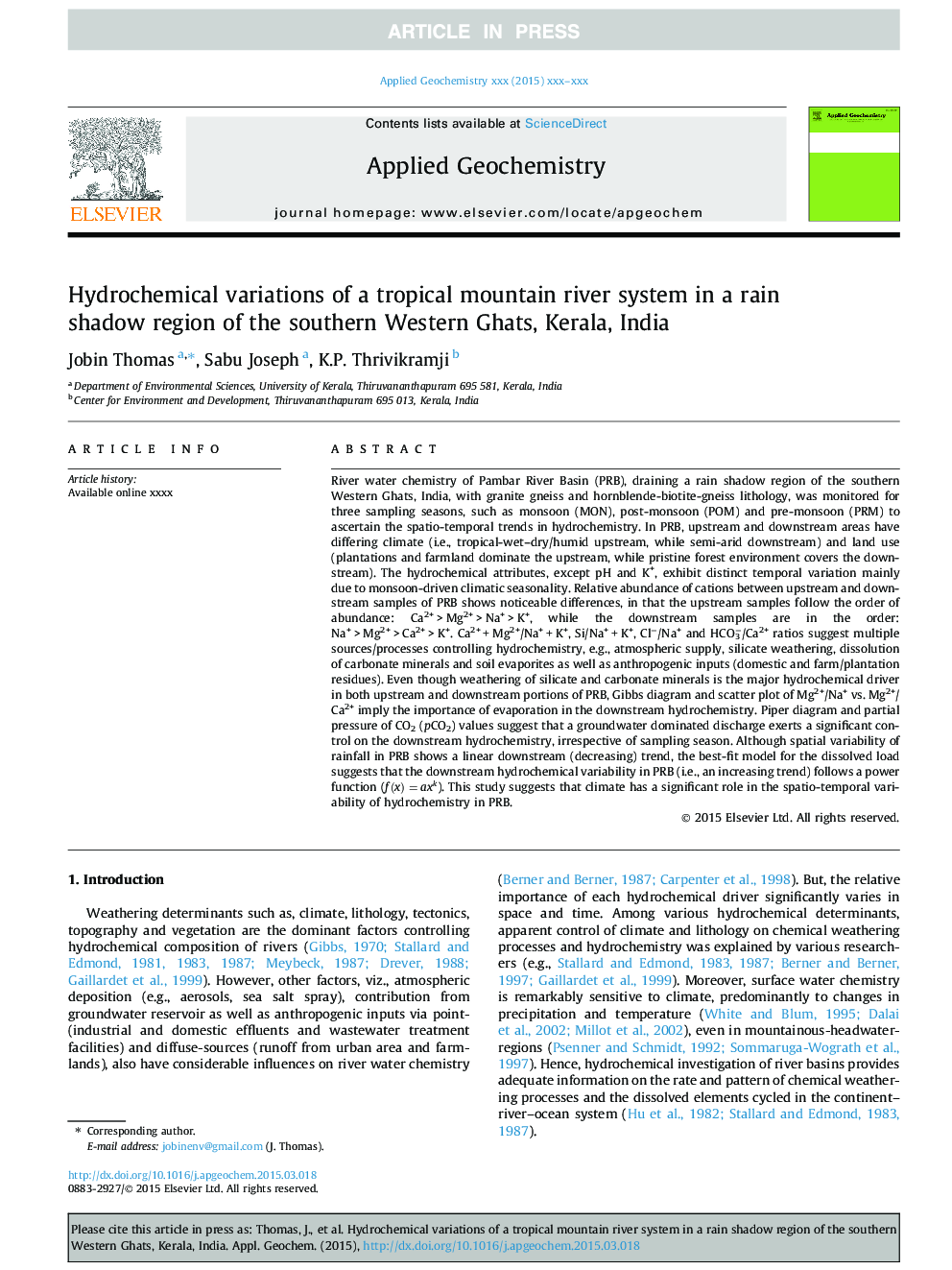| Article ID | Journal | Published Year | Pages | File Type |
|---|---|---|---|---|
| 6334879 | Applied Geochemistry | 2015 | 15 Pages |
Abstract
River water chemistry of Pambar River Basin (PRB), draining a rain shadow region of the southern Western Ghats, India, with granite gneiss and hornblende-biotite-gneiss lithology, was monitored for three sampling seasons, such as monsoon (MON), post-monsoon (POM) and pre-monsoon (PRM) to ascertain the spatio-temporal trends in hydrochemistry. In PRB, upstream and downstream areas have differing climate (i.e., tropical-wet-dry/humid upstream, while semi-arid downstream) and land use (plantations and farmland dominate the upstream, while pristine forest environment covers the downstream). The hydrochemical attributes, except pH and K+, exhibit distinct temporal variation mainly due to monsoon-driven climatic seasonality. Relative abundance of cations between upstream and downstream samples of PRB shows noticeable differences, in that the upstream samples follow the order of abundance: Ca2+Â >Â Mg2+Â >Â Na+Â >Â K+, while the downstream samples are in the order: Na+Â >Â Mg2+Â >Â Ca2+Â >Â K+. Ca2+Â +Â Mg2+/Na+Â +Â K+, Si/Na+Â +Â K+, Clâ/Na+ and HCO3â/Ca2+ ratios suggest multiple sources/processes controlling hydrochemistry, e.g., atmospheric supply, silicate weathering, dissolution of carbonate minerals and soil evaporites as well as anthropogenic inputs (domestic and farm/plantation residues). Even though weathering of silicate and carbonate minerals is the major hydrochemical driver in both upstream and downstream portions of PRB, Gibbs diagram and scatter plot of Mg2+/Na+ vs. Mg2+/Ca2+ imply the importance of evaporation in the downstream hydrochemistry. Piper diagram and partial pressure of CO2 (pCO2) values suggest that a groundwater dominated discharge exerts a significant control on the downstream hydrochemistry, irrespective of sampling season. Although spatial variability of rainfall in PRB shows a linear downstream (decreasing) trend, the best-fit model for the dissolved load suggests that the downstream hydrochemical variability in PRB (i.e., an increasing trend) follows a power function (f(x)=axk). This study suggests that climate has a significant role in the spatio-temporal variability of hydrochemistry in PRB.
Keywords
Related Topics
Physical Sciences and Engineering
Earth and Planetary Sciences
Geochemistry and Petrology
Authors
Jobin Thomas, Sabu Joseph, K.P. Thrivikramji,
